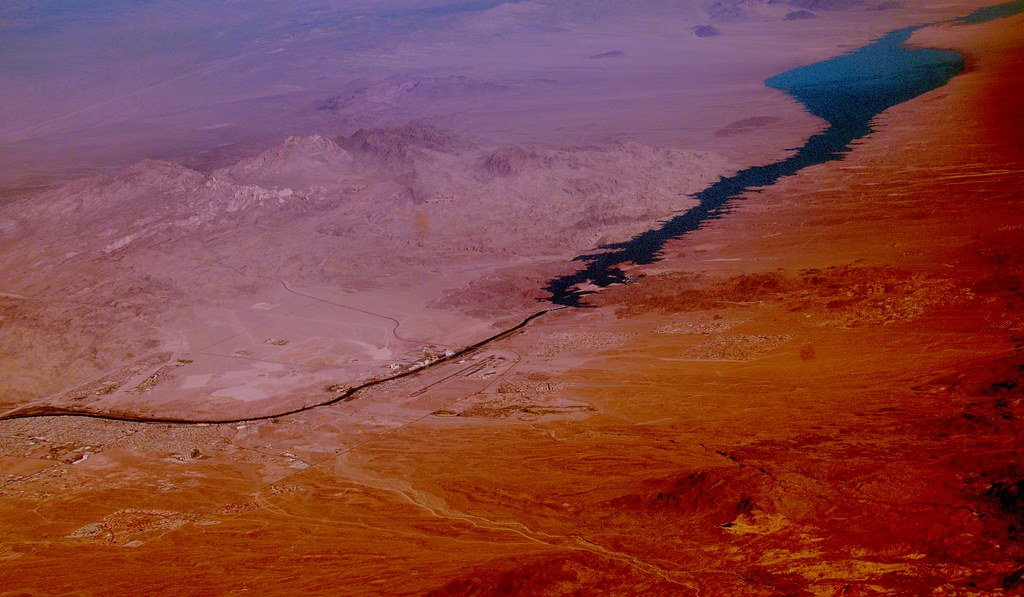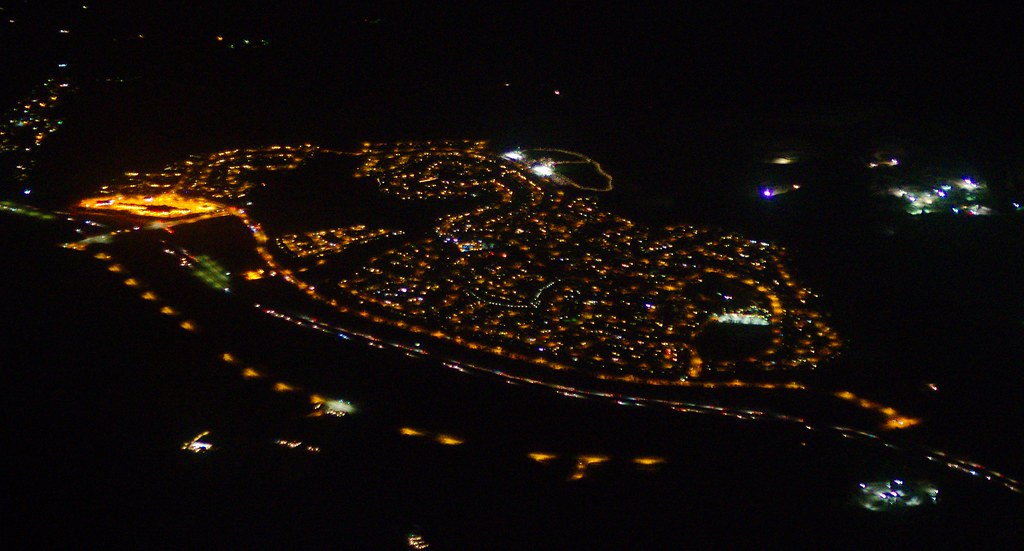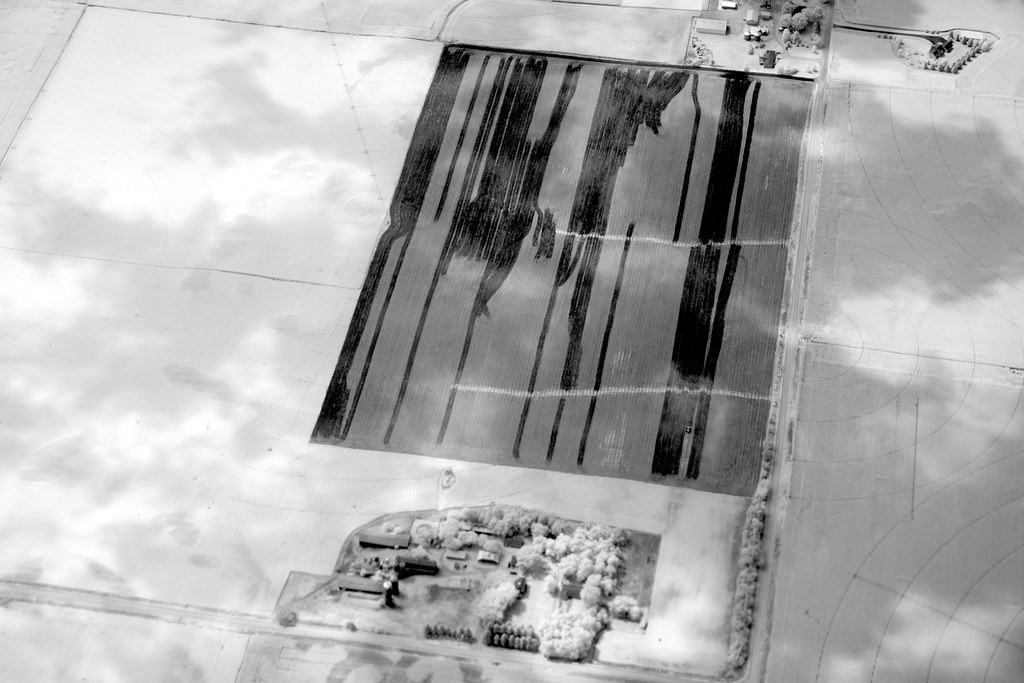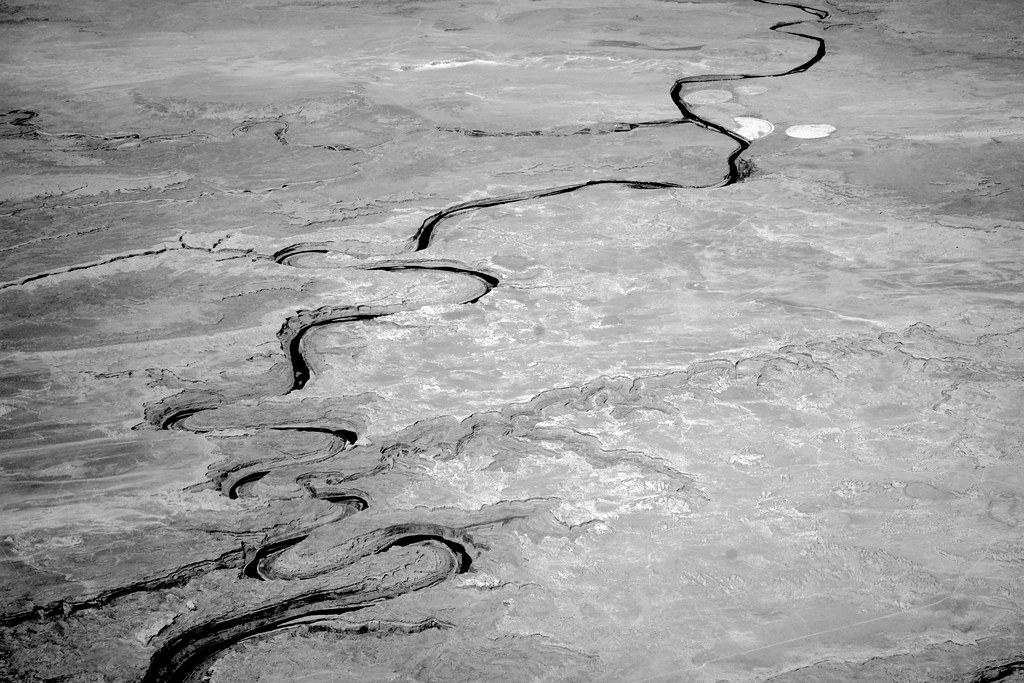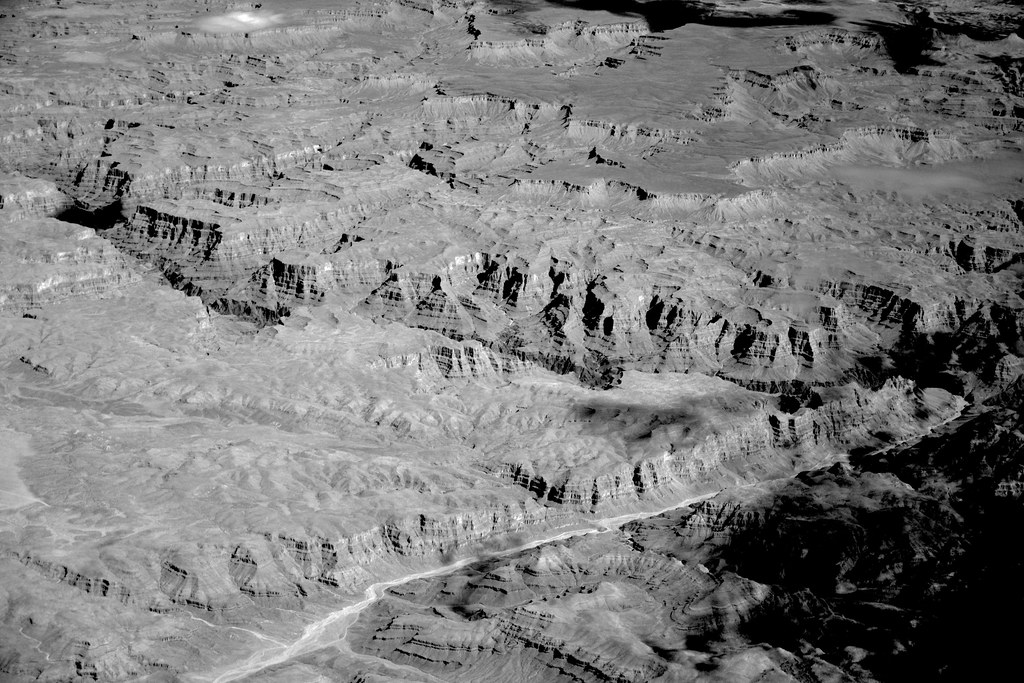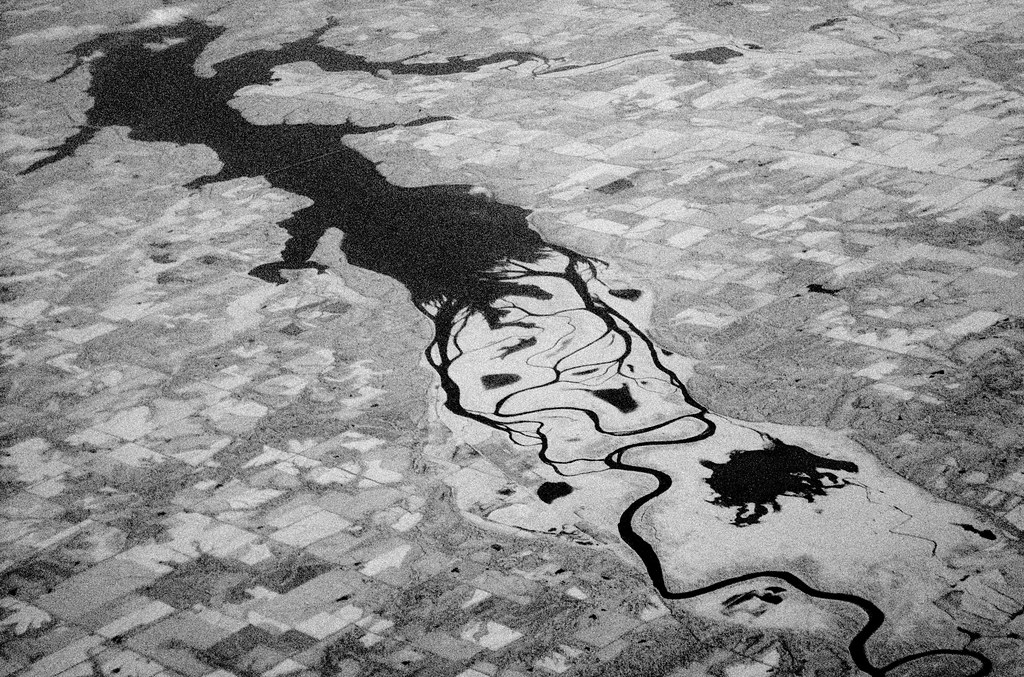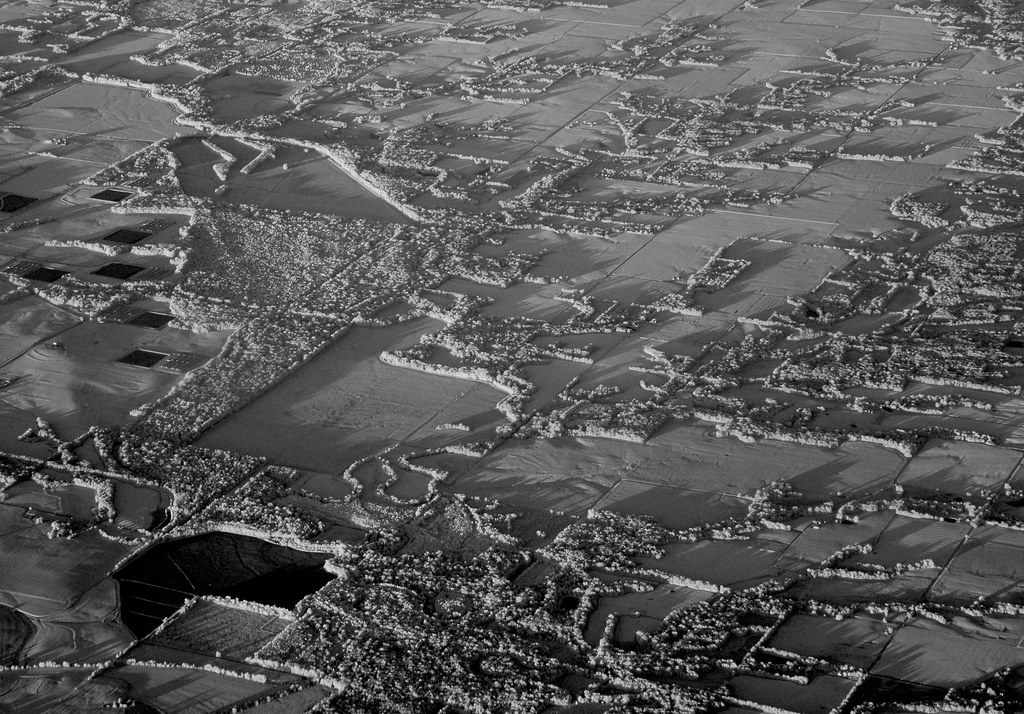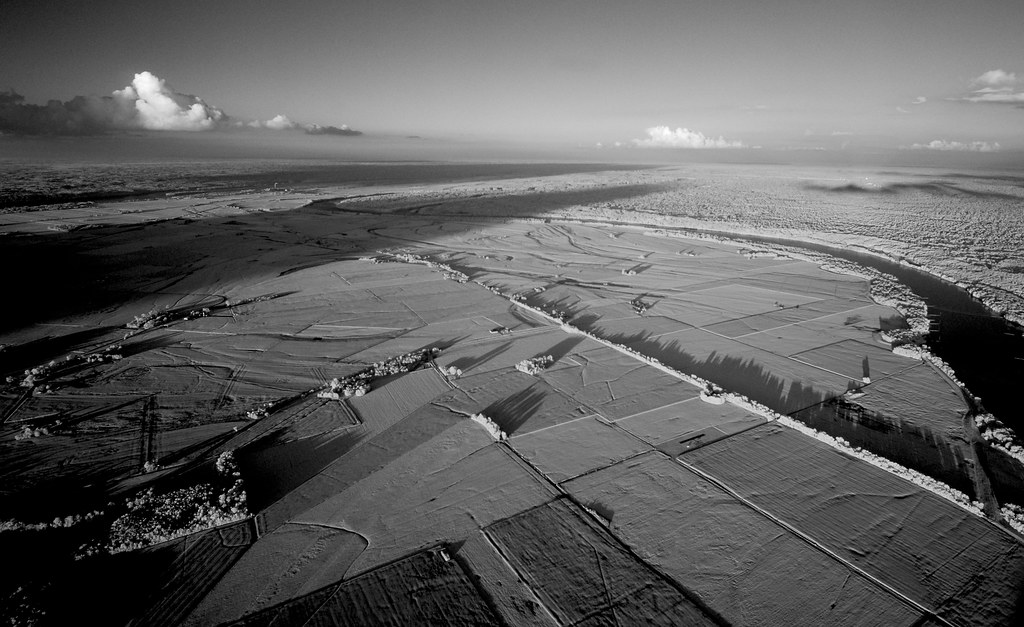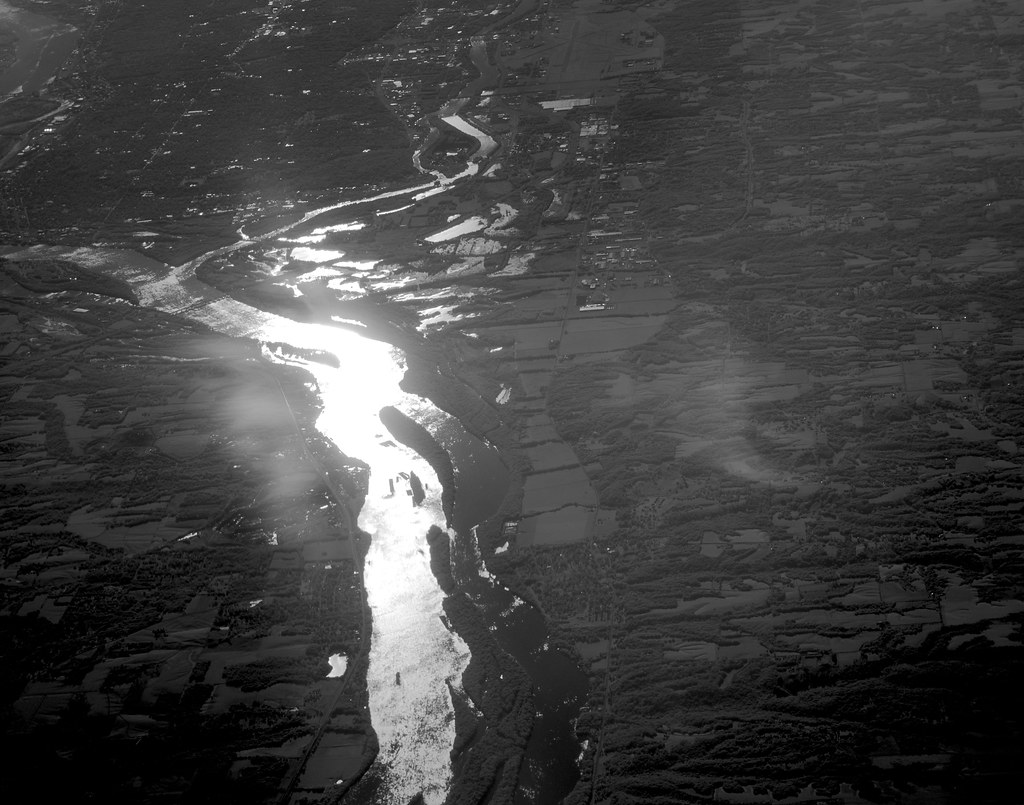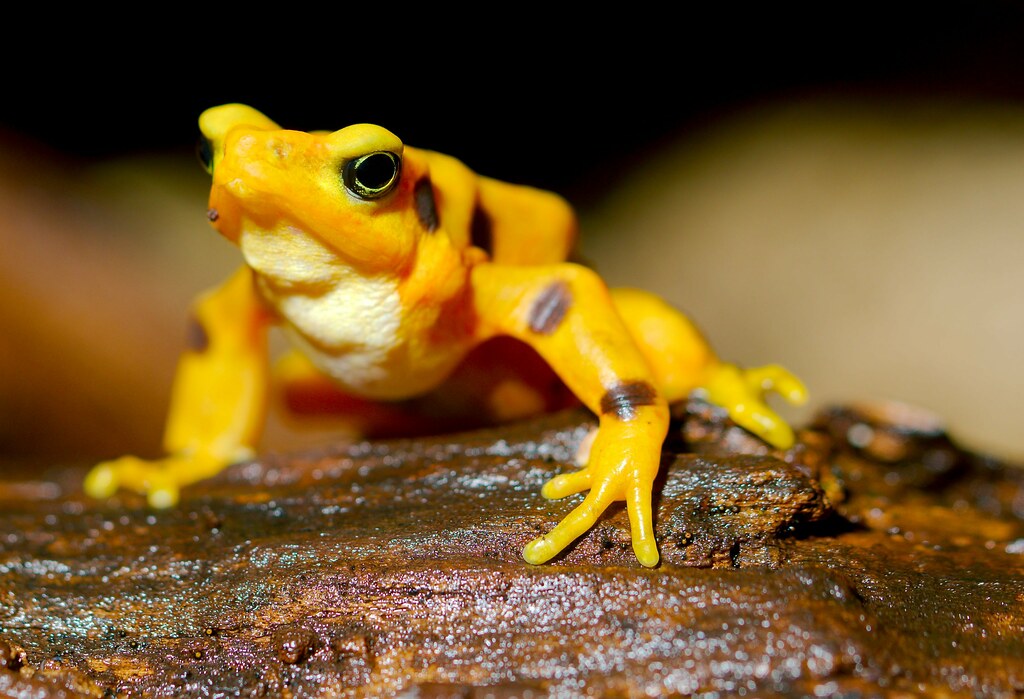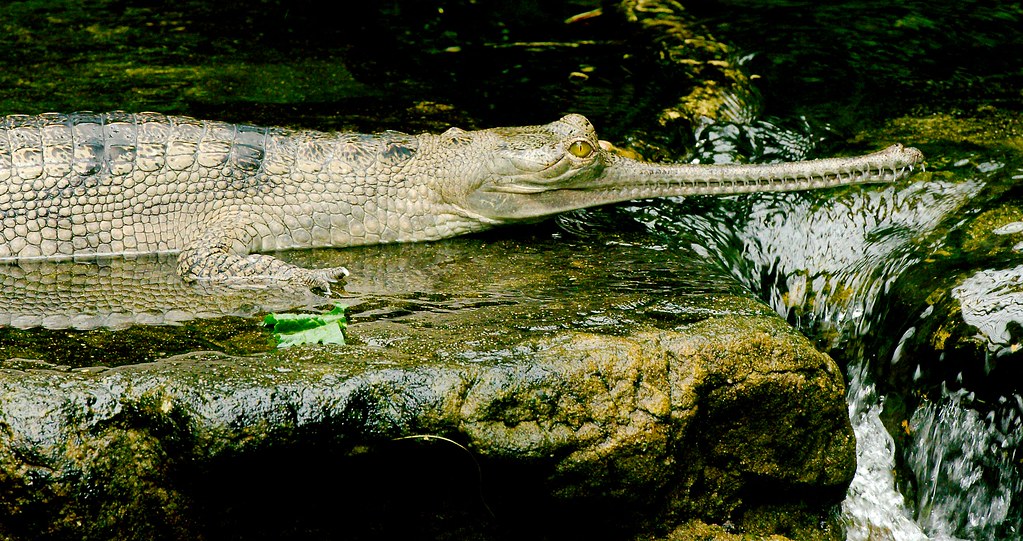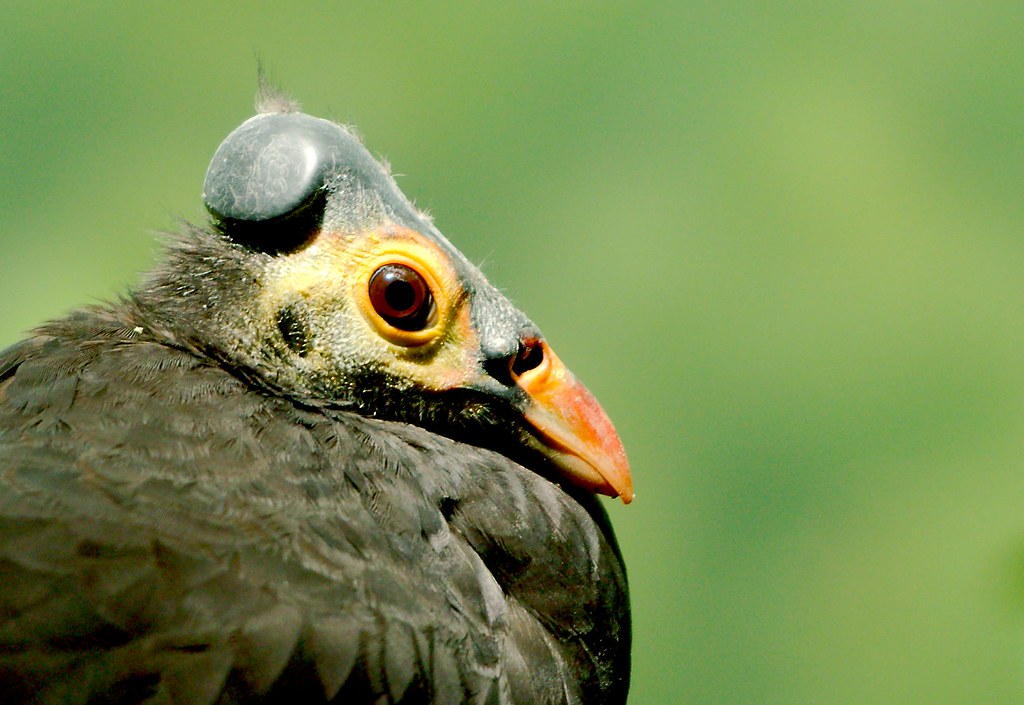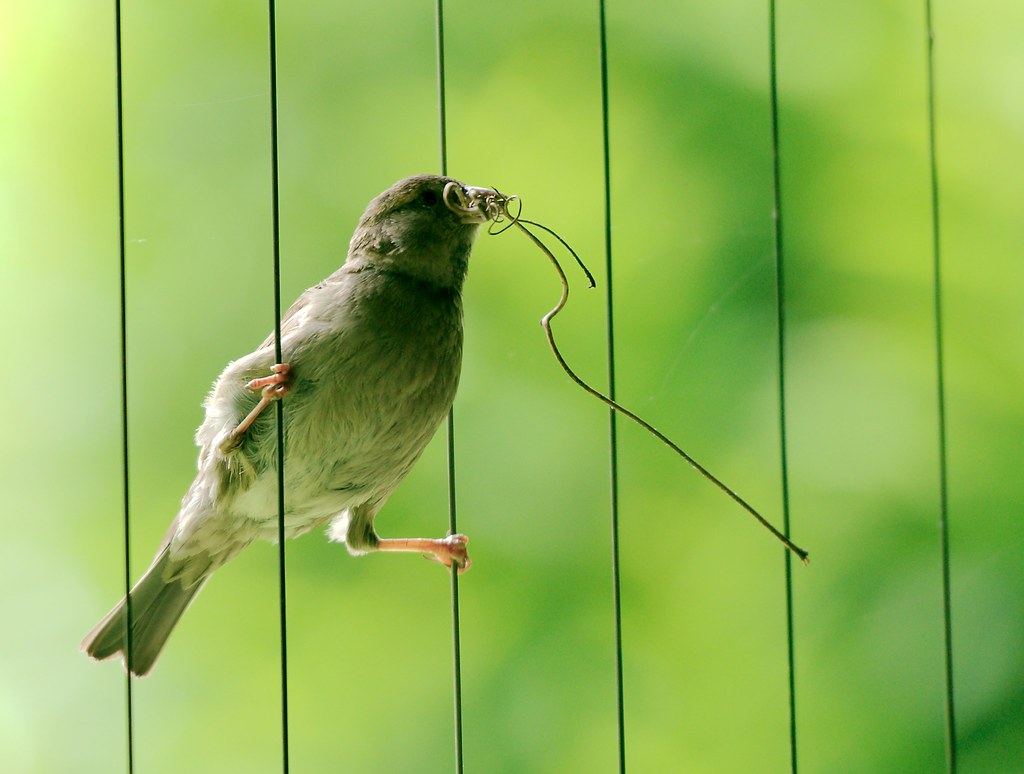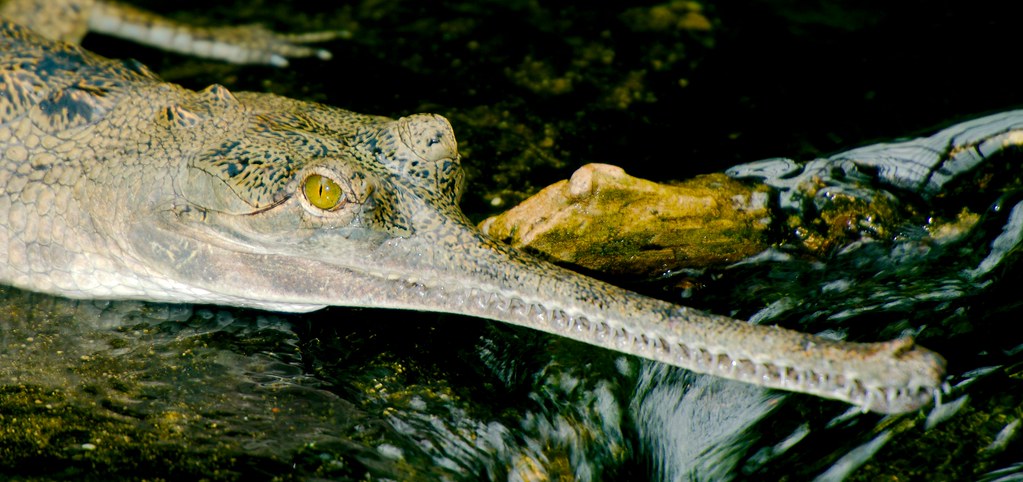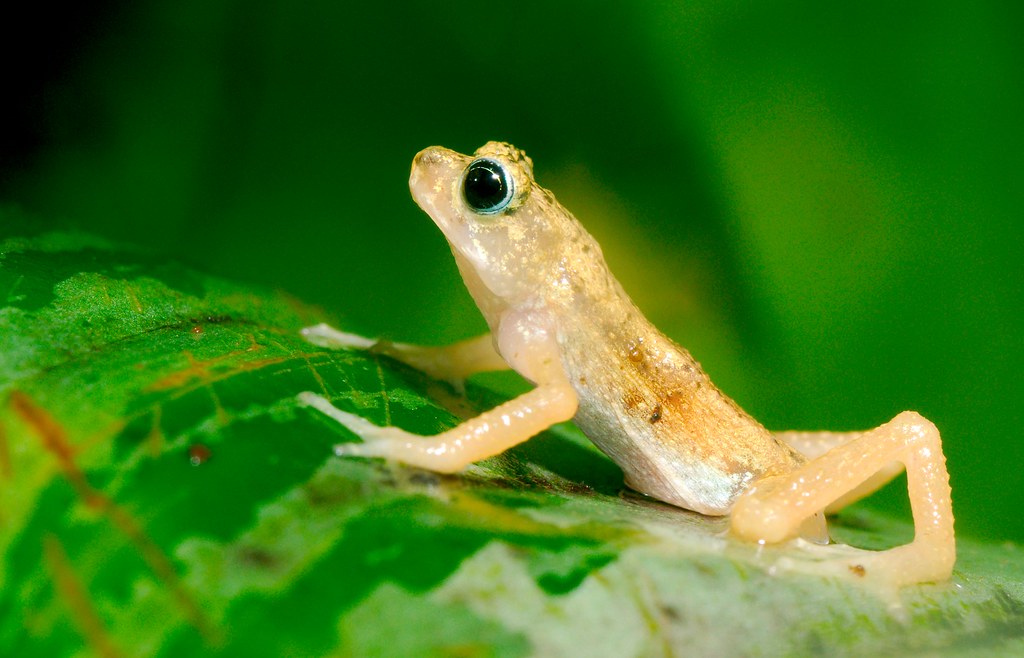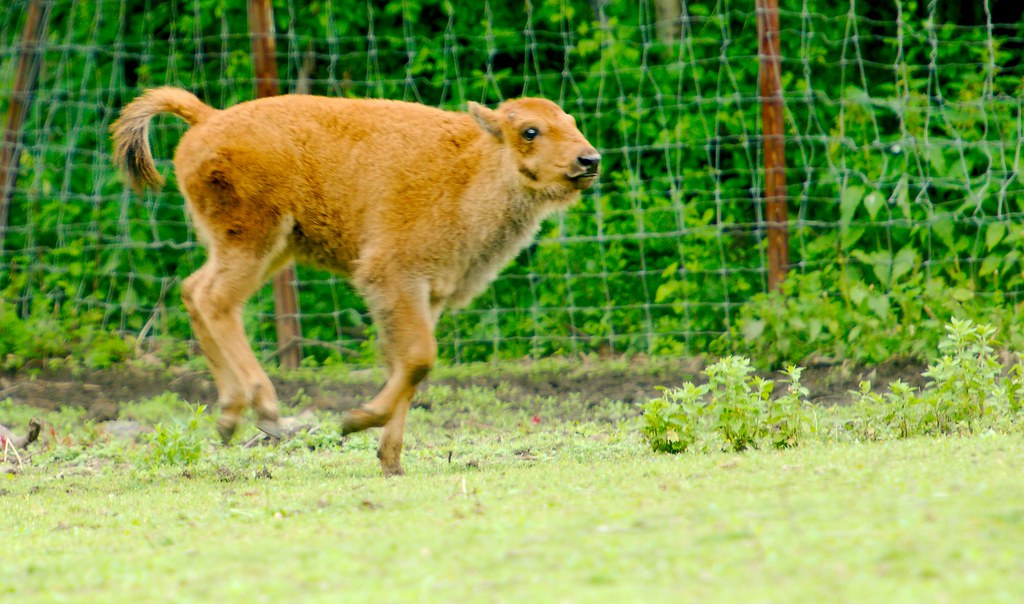Dam it.
Suburb
LA at night
At night, if you see a sharp point of light, that means that light is going straight from that light to your eye (or camera). If it’s a bit spread out and ill defined, that means that the light is bouncing off the ground. When you’re doing this from a plane and see something like this, you know that it’s a place that cares both about economics (putting light only where it’s needed), but also about light pollution.
Farm
River
The West
Water system
Farmland
Sunset
Infrared water
Panamanian Golden Frog
This animal is extremely poisonous, producing, among other things, zetekitoxin AB. This is a tetrodotoxin compound that blocks voltage-dependent sodium channels. You’d think, from that name, that if you accidentally touched one of these guy, you could treat it by eating salt and increasing your body voltage. This is not true. Were you to do this, all you would do is confuse the medical examiner as to whether you were poisoned, electrocuted, or choked on a pretzel.
Gharial
American Bison
The bison has an udder where milk is only released when the young calf slams into it with their head. So when you visit a field when the babies are young, you see lots and lots of little bison headbutting their mothers so they can have lunch.
In other words, all the boys bring the milk shake to the yard.
Maleo
Bird
Gharial
Gibbon
Kihansi Spray Toad
This is the other animal I went to the Bronx zoo to see. This is the Kihansi spray toad, native to a an area at the base of the Kihansi River waterfall in Tanzania. Their entire habitat was less than 0.0077 square miles.
In 1999, Tanzania built a dam across the Kihansi, which reduced the amount of water going through the waterfall, which reduced the overall amount of spray that created a moist enough environment for them. A sprinkler system was added to help keep them alive, but in 2003, the system broke at the same time that the chytrid fungus showed up in that area and the dam was flushed, which released pesticides into their environment. In 2004, they became extinct in the wild. We are fortunate that they breed well in captivity.
Today, the Bronx zoo is one of the only places on the planet where you can see them. The others are: the Toledo Zoo, the Chattanooga Zoo, the Detroit Zoo and the Henry Doorly Zoo in Omaha.
